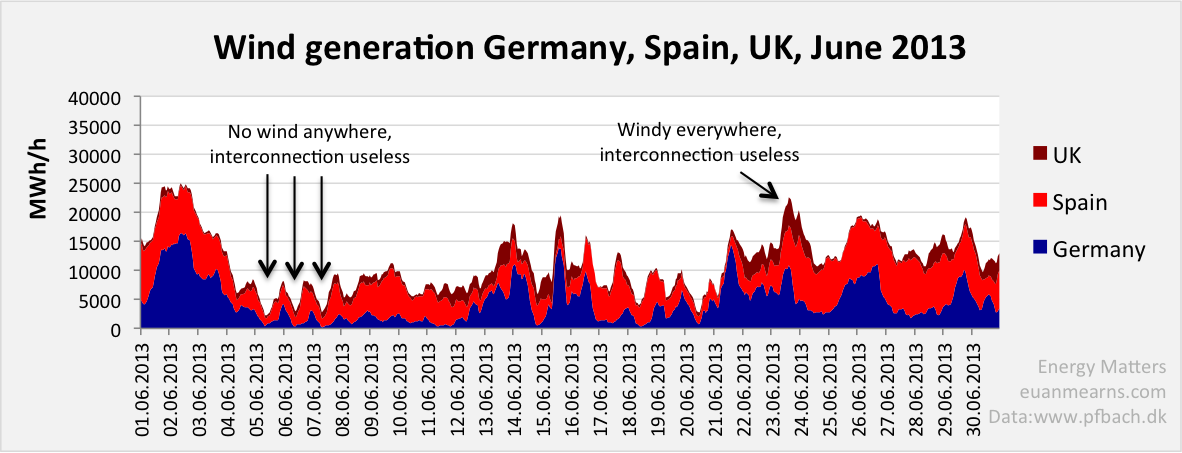NW-Bound
Give me a museum and I'll fill it. (Picasso) Give me a forum ...
- Joined
- Jul 3, 2008
- Messages
- 35,712
Laymen often say "When a region cannot generate power from wind or solar, it can borrow from its neighbors".
Fine, but the source of the neighbor's power would better be coal or nuclear. And lots of it, if that neighbor has to carry everybody on his back. It's because wind and solar generation often goes down for almost the whole continent!
See below:

Fine, but the source of the neighbor's power would better be coal or nuclear. And lots of it, if that neighbor has to carry everybody on his back. It's because wind and solar generation often goes down for almost the whole continent!
See below:

Last edited:




